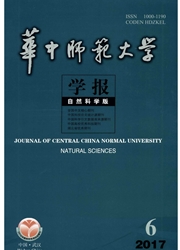

 中文摘要:
中文摘要:
研究证实裂合酶CpcS1、CpcT1能分别催化藻蓝蛋白口亚基(简称CpcB)的两个色素结合位点(84位和155位)共价偶联藻蓝色素PCB(phycocyanobmn),但通过实验发现仅CpcS1和CpcT1共同催化CpcB无法生成天然构像的色素蛋白.为了挑选出辅助裂合酶,经过综合分析,筛选出6个与CpcS1、CpcT1同源的裂合酶.将编码裂合酶的基因按照本实验的需求,重新构建在其它载体上,在大肠杆菌BL21体内表达出蛋白后,分别与CpcS1、CpcT1混合,利用亲和层析分离,然后通过蛋白质电泳图谱初步分析裂合酶之间形成复合物的情况.能形成复合物的裂合酶,再与CpcS1、CpcT1及脱辅基蛋白共同转入大肠杆菌BL21体内进行体内重组研究.结果表明,CpcT1能分别与CpcS1、CpcT2、PecF形成复合物,但这些复合物均不能辅助催化CpcB生成天然产物.
 英文摘要:
英文摘要:
The protein CpcS1 encoded by gene altO617 and the protein CpcT1 encoded by gene all5339 were proved to be the lyase of phycocyanin β subunit of Cys-84 and Cys- 155, respectively, with which phycocyanobiln can be covalent coupled. But lyases CpcS1 plus CpcT1 could not catalyse the attachment of phycocyanobilin at the two sites at the same time. To search the possible assistant lyases, six homologous genes were tested with comparison to CpcS1 and CpcT1. These genes were constructed to fit for the experiments designed. After the coded proteins were expressed in E. coli, they were mixed together with protein CpcS1 or CpcT1, and then purified by Ni2+ affinity chromatography. The complexes among those proteins could be checked by SDS-PAGE. The experiments showed that CpcT1 interacted with CpcS1, CpcT2, PecF, forming the respective complexes. Even so, when those genes were transformed into E. coli, together with phycocyanobilin-biosynthesizing genes, cpcB, and cpcS1 or cpcT1, no native CpcB was obtained.
 同期刊论文项目
同期刊论文项目
 同项目期刊论文
同项目期刊论文
 Photophysical diversity of two novel cyanobacteriochromes with phycocyanobilin chromophores: photoch
Photophysical diversity of two novel cyanobacteriochromes with phycocyanobilin chromophores: photoch a glycosyl transferase homolog involved in global cellular regulation and high-light tolerance of Sy
a glycosyl transferase homolog involved in global cellular regulation and high-light tolerance of Sy 期刊信息
期刊信息
